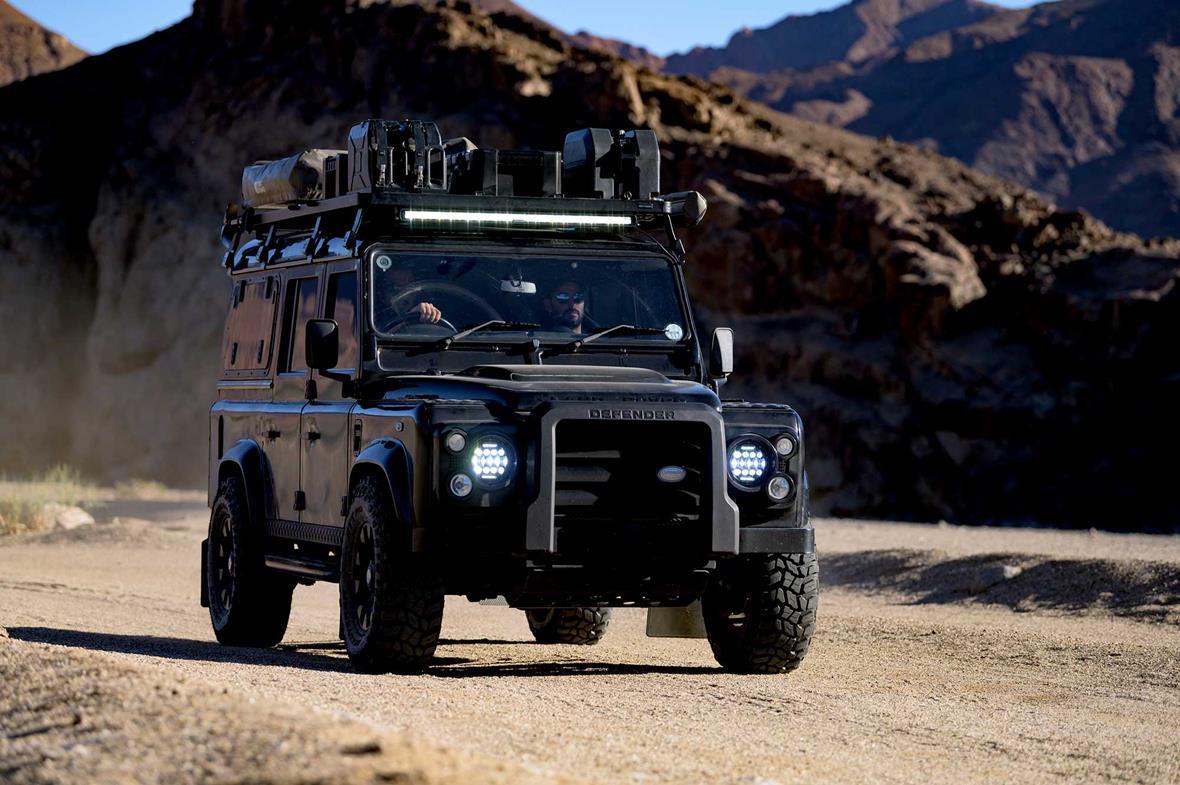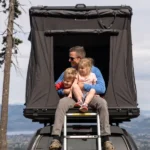Explore the best overlanding vehicles for beginners and experienced travelers. Discover top 4x4s, SUVs, and trucks, learn about overland vehicle setups, and find expert tips for off-road adventures.
- Introduction to Overlanding Vehicles
- Key Features of an Ideal Overlanding Vehicle
- Top 4×4 Overlanding Trucks
- Best SUVs for Overlanding
- Overland Vehicle Setup Essentials
- Choosing the Right Vehicle for Your Needs
- Tips for Maintaining Overlanding Vehicles
- Overlanding with Families and Groups
- Frequently Asked Questions (FAQ)
- Conclusion & Call to Action
Introduction to Overlanding Vehicles
Overlanding has evolved into one of the most immersive forms of adventure travel, blending self-sufficiency, off-road exploration, and the thrill of discovering remote destinations. Central to every successful overlanding expedition is the overlanding vehicle, a reliable and capable platform that carries travelers and their gear safely across diverse terrains.
The ideal overlanding vehicle is not merely a means of transportation; it is a mobile base camp equipped for extended journeys. Whether traversing deserts, forests, or mountainous regions, the right vehicle can significantly enhance both safety and enjoyment. This guide explores the best overlanding vehicles, detailing their features, setups, and modifications, catering to enthusiasts ranging from beginners to seasoned adventurers.
Key Features of an Ideal Overlanding Vehicle
Selecting a suitable overlanding vehicle requires careful consideration of multiple factors. The following attributes define an ideal overlanding platform:
Off-Road Capability
- Drivetrain: 4×4 or all-wheel-drive systems ensure traction on uneven, slippery, or loose terrain.
- Ground Clearance: Higher clearance minimizes underbody damage on rocky trails.
- Suspension: Robust suspension systems absorb rough terrain impacts, enhancing ride comfort.
Reliability and Durability
- Overlanding vehicles must endure prolonged use in challenging conditions.
- Proven durability reduces the risk of breakdowns in remote regions.
- Established support networks for spare parts and service are advantageous.
Storage and Payload Capacity
- Adequate cargo space is essential for carrying gear, camping equipment, food, and water.
- Roof racks, storage boxes, and custom drawer systems improve organization.
- Towing capacity allows for trailers or additional gear transport.
Fuel Efficiency and Range
- Efficient fuel consumption extends range between refueling stops.
- Larger fuel tanks or auxiliary fuel systems are beneficial for remote journeys.
Comfort and Adaptability
- Comfortable seating for long drives.
- Modular setups allow flexibility for various trip types, from solo adventures to family excursions.
Top 4×4 Overlanding Trucks
Overlanding trucks are prized for their versatility, durability, and cargo capacity. Below are some of the top 4×4 trucks for off-road expeditions:
Toyota Tacoma / Hilux
- Reliability: Renowned for exceptional longevity and low maintenance.
- Off-Road Performance: Strong suspension and solid drivetrain handle rough terrain efficiently.
- Popular Modifications: Lift kits, all-terrain tires, roof racks, and camper shells.
- Advantages: Excellent resale value, widespread aftermarket support.
- Ideal For: Solo travelers, small groups, and moderate overlanding trips.
Ford Ranger / F-150 Raptor
- Performance: Combines off-road capability with robust payload and towing capacity.
- Features: Terrain management systems, heavy-duty suspension, and skid plates.
- Overlanding Setup: Rooftop tents, bed racks, dual-battery systems, and storage drawers.
- Ideal For: Extended trips requiring extra cargo space and power.
Best SUVs for Overlanding
SUVs offer a balance of comfort, off-road performance, and interior space. The following models are widely regarded for overlanding:
Toyota Land Cruiser
- Durability: Legendary for reliability under extreme conditions.
- Off-Road Prowess: Excellent traction, suspension, and drivetrain for diverse terrains.
- Interior Comfort: Spacious cabin suitable for families or group travel.
- Setup Options: Roof-top tents, awnings, and storage systems.
Jeep Wrangler / Grand Cherokee
- Versatility: Highly modifiable with extensive aftermarket options.
- Trail Performance: Strong off-road capabilities for rock crawling, mud, and sand.
- Overlanding Accessories: Roof racks, off-road bumpers, skid plates, and auxiliary lighting.
Land Rover Defender
- Luxury Meets Adventure: Combines off-road capability with comfort and advanced features.
- Global Reputation: Trusted for long-distance expeditions in extreme environments.
- Setup Options: Roof tents, recovery gear, and onboard storage solutions.
Overland Vehicle Setup Essentials
Proper vehicle setup enhances both safety and comfort during overlanding trips. Essential components include:
Shelter and Sleeping Solutions
- Roof-Top Tents: Quick deployment, elevated sleeping platform.
- Awnings: Provide shade and shelter for cooking or relaxation.
- Interior Storage: Modular drawers and storage boxes for efficient organization.
Recovery and Maintenance Gear
- Recovery Kits: Winches, tow straps, and shackles for self-recovery.
- Spare Parts: Tires, belts, fluids, and tools for on-the-trail repairs.
- Vehicle Maintenance: Regular inspection of suspension, brakes, and drivetrain.
Navigation and Communication
- GPS and Mapping Devices: Reliable navigation for areas without cell coverage.
- Two-Way Radios and Satellite Phones: Essential for communication in remote regions.
- Emergency Beacons: Critical for safety during emergencies.
Choosing the Right Vehicle for Your Needs
Selecting an overlanding vehicle depends on factors such as:
- Budget: Determines make, model, and aftermarket support options.
- Trip Length: Longer trips may require larger fuel capacity and storage.
- Terrain Type: Rocky, sandy, forested, or snowy conditions influence vehicle choice.
- Passenger Count: Family or group travel requires more interior space and comfort.
Comparison Table of Popular Overlanding Vehicles
| Vehicle | Type | Off-Road Capability | Cargo Space | Ideal Use |
|---|---|---|---|---|
| Toyota Tacoma | Truck | Excellent | Moderate | Small groups, moderate trips |
| Ford Ranger Raptor | Truck | Very Good | High | Long trips, heavy loads |
| Toyota Land Cruiser | SUV | Excellent | High | Family/group travel, extreme terrain |
| Jeep Wrangler | SUV | Excellent | Moderate | Trail-focused, solo or duo trips |
| Land Rover Defender | SUV | Excellent | High | Luxury overlanding, long-range expeditions |
Tips for Maintaining Overlanding Vehicles
Proper maintenance prolongs vehicle lifespan and ensures reliability:
- Pre-Trip Inspection: Check suspension, tires, brakes, fluids, and battery.
- Regular Cleaning: Remove mud, sand, and debris to prevent corrosion.
- Seasonal Preparation: Adjust tires, antifreeze, and accessories for climate conditions.
- Scheduled Maintenance: Follow manufacturer service intervals for optimal performance.
Overlanding with Families and Groups
Family and group overlanding requires additional considerations:
- Vehicle Selection: Choose spacious SUVs or trucks with camper options.
- Comfort: Extra seating, climate control, and sleeping arrangements.
- Gear Storage: Organized systems to carry food, water, safety gear, and entertainment.
- Internal Resource: For detailed family overlanding tips, see Overlanding with Kids: Family-Friendly Tips and Gear Guide.
Frequently Asked Questions (FAQ)
Q1: What is the best overlanding vehicle for beginners?
A1: Trucks and SUVs with proven reliability, moderate off-road capability, and ease of modification, such as the Toyota Tacoma or Jeep Wrangler, are ideal for beginners.
Q2: Can I overland with a stock SUV?
A2: Yes, a stock SUV can handle light overlanding. However, additional recovery gear, proper tires, and minimal modifications enhance safety and capability.
Q3: How much should I spend on an overlanding vehicle?
A3: Costs vary widely. A reliable setup for beginners may start around $30,000, while advanced overland vehicles with modifications can exceed $70,000.
Q4: What are the essential modifications for overlanding?
A4: Common modifications include lift kits, off-road tires, recovery gear, roof-top tents, auxiliary fuel systems, and enhanced storage solutions.
Q5: How do I maintain my overlanding vehicle for long trips?
A5: Regular inspections, preventive maintenance, cleaning, and carrying essential spares ensure your vehicle remains reliable on long journeys.
Conclusion & Call to Action
Choosing the right overlanding vehicle is a critical decision that shapes the safety, comfort, and success of your off-road adventures. By understanding the key features, evaluating top trucks and SUVs, and properly setting up and maintaining your vehicle, travelers can confidently explore remote landscapes and embrace the true spirit of overlanding.
For comprehensive overlanding guides, expert vehicle reviews, and gear recommendations, visit Just Overland. Plan meticulously, equip your vehicle wisely, and embark on your next adventure with confidence.








